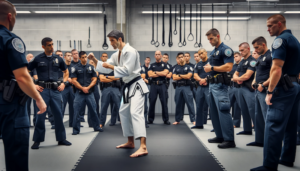Are you wondering about the best martial arts for women’s self-defense?
In this article, we’ll look at the 6 best martial arts for women’s self-defense and the reasons why they’re effective.
Contents
Best Martial Arts for Women’s Self-defense
The following martial arts take into account that women are generally physically weaker and slower than men (pace), and are therefore the best for women in 1 vs 1 self-defense situations against both men and women.
The following are also the best martial arts for women’s self-defense after a minimum of 2 years of training. Some martial arts may be more effective for self-defense in a short period of 6 to 12 months, but the below martial arts (except one) are the most effective in the long term, which should be the focus.
1. MMA
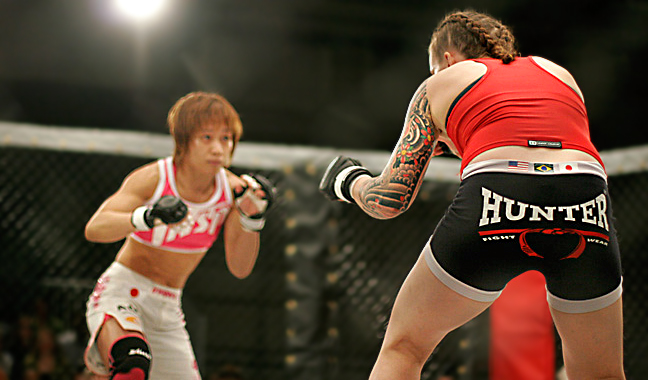
Mixed martial arts is a competition-focused sport that mixes striking, grappling, and jiu-jitsu into a streamlined class.
MMA is effective for women’s self-defense because it’s most representative of a real-life fight where the skills learned can be applied to a self-defense situation.
MMA teaches the best from a variety of martial arts, such as muay Thai, wrestling, boxing, and Bjj. Women will learn how to perform defensive strikes, evade strikes, and prevent takedowns through distance management, grip fighting, and sprawling.
They’ll also learn how to take down an aggressor and use jiu-jitsu and wrestling to control and execute locks and chokes to nullify or hurt them. It will also teach ground-and-pound (strikes on the ground) and how to scramble or use jiu-jitsu on the floor to get back to the feet before fleeing the scene.
Also, as MMA is sport-focused, a lot of the training involves sparring sessions, which is the best way for a woman to prepare for self-defense situations due to the stress, competition, and intensity they provide.
Overall, while MMA is sport-focused which means it teaches students how to be the aggressor, it teaches very effective defensive skills that women can transfer to self-defense situations quite easily.
Women that train in MMA will also have much increased cardiovascular endurance, as MMA athletes prepare for 15 minutes of fighting with only 2 minutes of rest. Cardio is one of the greatest tools alongside fighting ability in self-defense situations.
The only concern is that as MMA teaches the best from a variety of martial arts, the time taken for women to get to a proficient skill level where she’s ready to defend against attackers is likely to be at least 2 years.
However, if a woman has the time and discipline to train in MMA, it’s easily one of the best for self-defense.
2. Combat Sambo
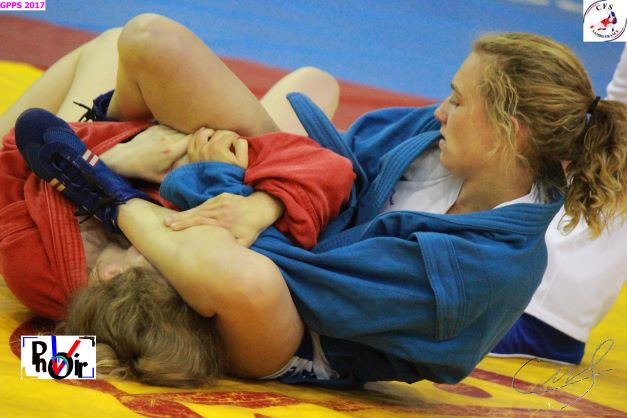
Sambo is an acronym for samozashchita bez oruzhiya, which translates to self-defense without weapons. Sambo was introduced uniquely for the Soviet police and special forces in the 1920s to improve their hand-to-hand fighting skills.
Combat Sambo is similar to MMA as it teaches a mix of striking (standing and ground), grappling (standing and ground), and submissions (ground only).
In terms of grappling and submissions, combat sambo is heavily influenced by judo and wrestling so it includes a lot of throws and takedowns training, while, unlike judo, combat sambo allows for leg submissions (knee bar, angle lock). These are useful for women’s self-defense as they can be used effectively by much lighter women against heavier aggressors.
Combat sambo striking includes headbutts, groin shots, soccer kicks, punches, kicks, knees, and elbow strikes. This is more inclusive than the majority of martial arts and they’re all useful tools in a self-defense situation.
The biggest benefit of combat sambo over MMA is that it’s practiced in a jacket and shorts (similar to a gi). This is more representative of a self-defense situation as clothing can be grabbed for defending and securing takedowns, as well as on the ground when performing submissions and maneuvers.
Overall, combat sambo is great for women’s self-defense because it creates well-rounded fighters who can hold their own in any direction an altercation goes, along with the added focus on self-defense scenario training.
Its weakness is similar to MMA, in that it takes a longer time to become skilled due to how it teaches a much wider variety of fighting. In the long run, though, combat sambo is one of the most effective for women’s self-defense.
3. Bjj
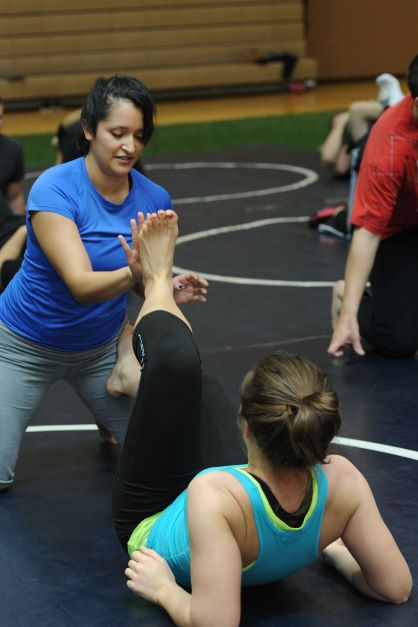
Brazilian jiu-jitsu (Bjj) focuses on ground fighting, by way of grappling and submissions (locks and chokes), and has proven many times over to be effective when used by the most elite martial artists in the world against one another, let alone against untrained aggressors in the real world.
Bjj has also been proven effective when used against much heavier and stronger opponents. This makes Bjj one of the primary self-defense martial arts for women (especially smaller women) as most aggressors look to take advantage of women who are lighter and seen as unable to defend themselves.
The reason Bjj is effective for women who are naturally lighter in weight is that it focuses on technique and leverage, rather than strength (although it helps). However, in terms of strength, women are naturally strongest in the lower body and this helps the most during grappling rather than striking.
Most often an aggressor will engage with women in a grapple or wrestling exchange. Here, Bjj will help women defend takedowns (grip fighting), take an aggressor down, and control or nullify them on the ground with grappling, positioning, and locks and chokes (submissions).
Bjj is effective for takedowns because its use of a gi (uniform) makes it relevant to real-life self-defense situations as grabbing an aggressor’s clothing is likely.
If your Bjj school isn’t teaching standing grappling and takedowns (some don’t), change schools or take private lessons because it’s essential for women’s self-defense.
Bjj is also great for women’s self-defense because it’s one of the most competitive martial art sports. Bjj teaches its techniques best through hard competitive rolling (sparring/drilling) which most closely matches the intensity of a real-life self-defense situation.
Women can roll with actively resisting men much heavier than themselves to best practice real-life self-defense situations and continually improve their chances. Women can also practice against heavier and less skilled Bjj opponents because this is the most likely level of an attacker.
4. Wrestling
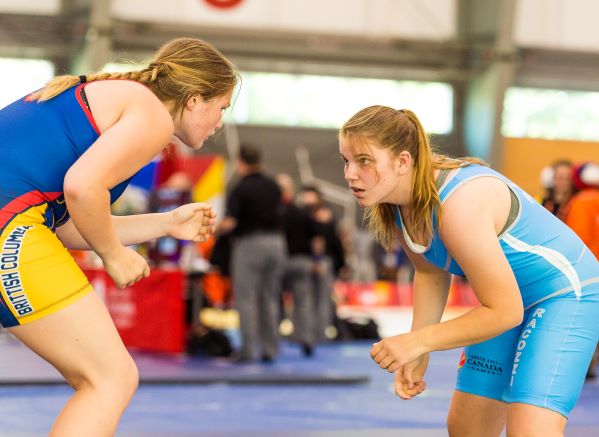
Wrestling is a grappling-based martial art focused on controlling an opponent through clinch-fighting, holds, throws, takedowns, and pins.
Wrestling is great for women’s self-defense because most of a woman’s strength comes from the lower body, so wrestling plays into this strength. It’s also because most self-defense situations involve grappling of some kind, whether standing or on the ground – and wrestling is designed for exactly that.
A woman proficient in wrestling can defend against an aggressor in a standing clinch and snuff takedowns (despite having weaker upper body strength), tackle them to the ground and flee as quickly as possible, or control them on the ground until they’re no longer resisting.
As well as practicing wrestling techniques, clinch-fighting, and throws, wrestling advocates for its practitioners to get stronger through heavy weight lifting and fitter through repetitive competitive wrestling rolls (sparring).
An added bonus of heavy weight lifting for women is they develop powerful legs and glutes, making them less likely to be attacked because aggressors often target smaller and weaker-looking victims.
So with learned techniques, increased strength and explosiveness, and improved muscular and cardiovascular endurance, a woman has her best chance in self-defense – especially against an untrained aggressor.
Lastly, as wrestling is focused on maximum intensity and explosiveness over a short period of 6 minutes, this is most representative of a real-life defense situation. If a woman is strong and can wrestle an aggressor for a couple of minutes, both are likely to try and disengage and flee the scene.
5. Muay Thai
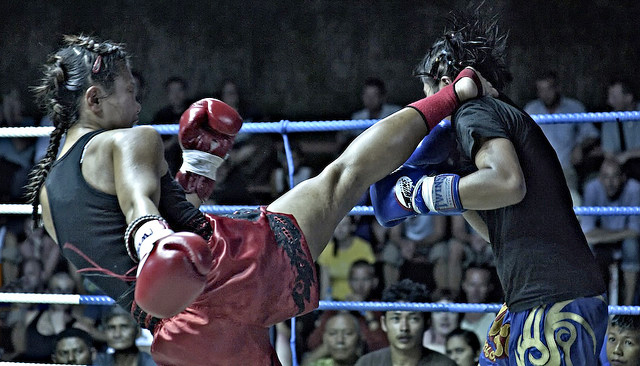
Muay Thai is known as the art of eight limbs because of its use of punches, elbows, knees, and kicks. Muay Thai focuses on stand-up striking but also includes standing grappling: clinches, sweeps, and throws.
While muay Thai is a combat sport that teaches practitioners how to damage an opponent – which is very useful in deterring an attacker – a lot of the striking techniques and skills can be used for defensive purposes.
Muay Thai teaches distance management as well as how to block and evade strikes. Defensive striking techniques such as the teep kick to the stomach are one the best for women’s self-defense as they can hurt an aggressor and be used when moving back to keep distance.
If a woman is grabbed, the muay thai clinch can be used to keep the scuffle standing, where they can then strike with elbows and knees or sweep and trip an aggressor to the floor before fleeing the scene.
As muay Thai is a very competitive combat sport, skills are pressure tested through sparring with many different opponents of all skill levels. This is essential for women’s self-defense as they can transfer the learned skills to stressful and intense real-life altercations easily.
The one negative of muay Thai is that it doesn’t teach any ground skills, which are very effective in self-defense. However, with its focus on striking and staying on the feet, women have a great chance of fleeing when the opportunity arises.
Overall, muay Thai is great for women’s self-defense, but with its focus on technique and conditioning, it will take a couple of years for it to be really effective for most women.
6. Krav Maga

Krav maga was developed specifically for the Israeli Armed Forces and is a mixture of the best self-defense tactics and techniques to survive an unfair fight.
To do this, krav maga teaches simple, effective, and practical counterattacks for use in self-defense situations with the aim to hurt and disengage an attacker to get away.
Classes teach the essential fundamentals of striking, wrestling, and submissions with self-defense situations in mind at all times.
With its focus on self-defense, krav maga adopts an anything-goes mentality. It teaches eye pokes, groin shots, headbutts, and many other techniques illegal in sport-based martial arts.
Krav maga also teaches environmental awareness to better understand dangerous situations forming. This way a woman can either escape or be ready to defend against an imminent attack.
However, krav maga is lower on the list because there’s much less pressure testing like in competitive sport-focused martial arts such as Bjj and muay Thai. Many krav maga schools became mostly theory-based because students wouldn’t return to classes where they were getting hurt.
It’s much harder to pressure test effective krav maga techniques like eye pokes and groin shots because they can cause injuries. This makes the techniques harder to use in self-defense situations because they haven’t been practiced under stress.
However, there are some krav maga schools that incorporate pressure testing through unpredictability and different scenario training. This is essential training as it best trains women how to handle themselves in a real self-defense situation.
Overall, Krav maga is very good at teaching women basic self-defense techniques and tactics in a short amount of time, while the more useful self-defense martial arts on this list take a lot more time and energy to become proficient in.
If a woman trained for 1 year in krav maga, she would likely be the most well-equipped for self-defense scenarios. With 2 years or more, the other martial arts on the list are more effective for women’s self-defense.
The Bottom Line
Overall, the best martial arts for women’s self-defense are those involving both grappling and striking, such as MMA and combat sambo, while the next best is the martial arts focusing on grappling such as Bjj and wrestling.
These are the best because they all train the key skill in women’s self-defense situations which is grappling (wrestling). Grappling is key because women can avoid/flee aggressors until they’re grabbed.
When grabbed, women can use grappling to stay on their feet or take down an opponent and flee or nullify an aggressor.
However, self-defense situations aren’t always black and white so the knowledge and ability to strike and submit are also essential skills that will definitely help and can elevate grappling to another level.



